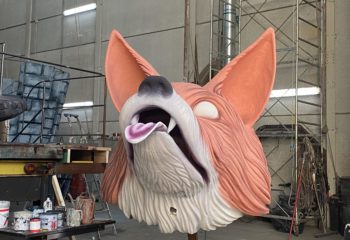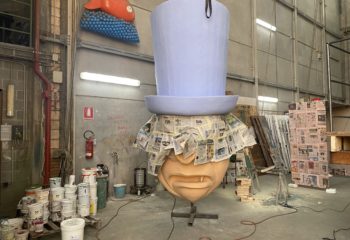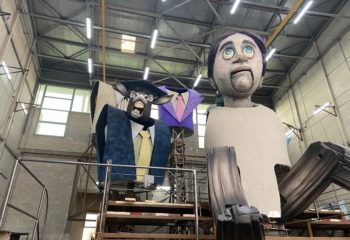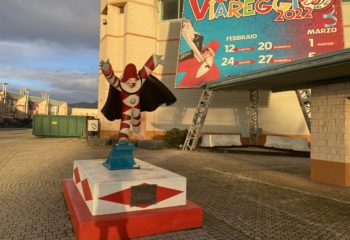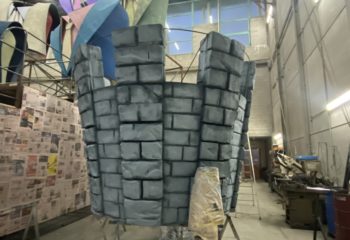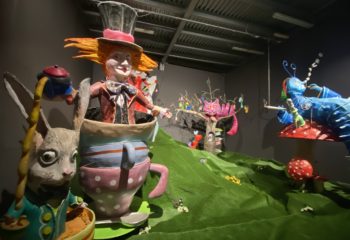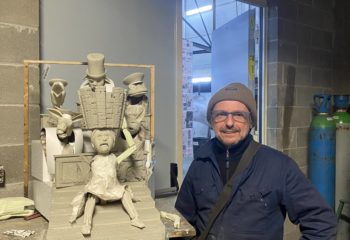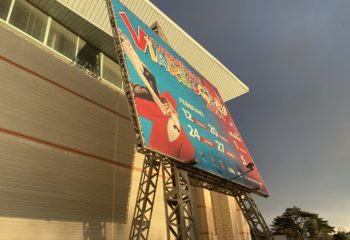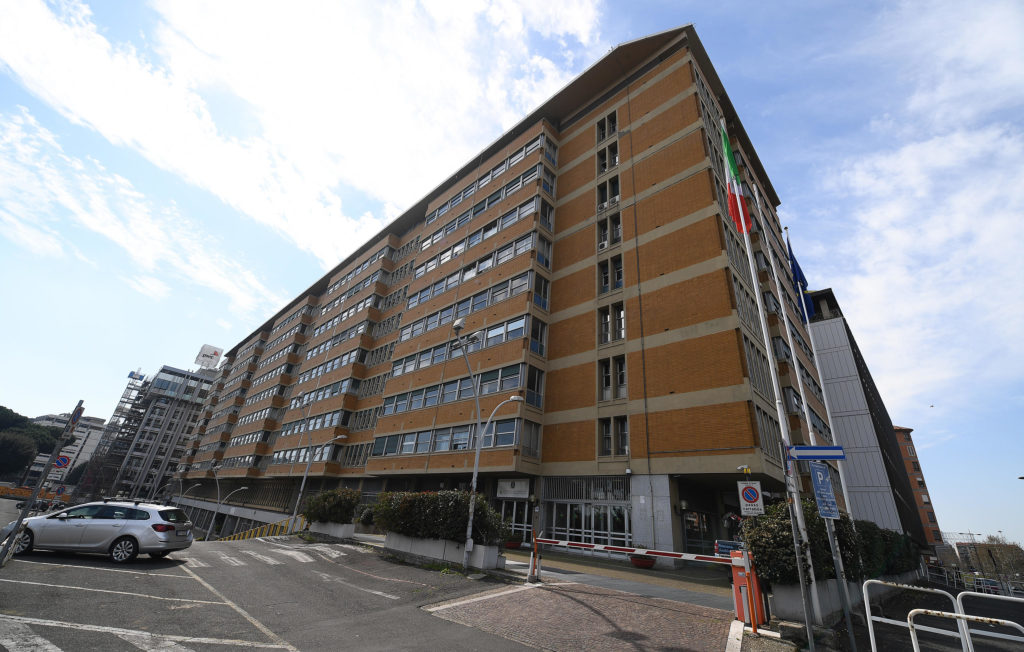Leggi la versione italiana
“I’m taking advantage of the last hours of daylight to pass the paint,” says Alessandro Avanzini, 62, star of CNA Storie of January, as he returns to his giant wolf head. It’s Sunday, but hangar number 13 is in full swing in Viareggio’s Carnival Cittadella (Tuscany, ndr) : an open-air workshop, where the sound of the cutters mixes with the cackles of children playing ball. The allegorical chariots take shape under the eyes of the families of Viareggio’s inhabitants who walk around curiously, peeking between the barriers.
Papà Silvano started the business in 1948. Alessandro entered the workshop in the ’80s: there, he learned everything and in 2000 he inherited the company. During the months he doesn’t dedicate to the construction of the cart, his activity is linked to film and advertising productions.
“It’s an unstable job for life,” he says, smiling. Because the conquest of the podium is a challenge that is renewed from year to year, when the Viareggio Carnival Foundation, a private entity owned by the Region and the City of Viareggio, produces an open call for proposals. The space to work and the participation in the parade are subject to a final approval and selection about the project value added: hence, if one year one business is in the “first category” of chariots, it is not certain that the same one is not then downgraded to the “second category”, or to the less prestigious “group masks”. At the end, every year all productions need to be started all over again and once the event is over, they’re demolished according to strict wastes regulations.
The evolution of materials for such chariots, is an important part of the historical background: “When I started with my father, the frame of the cart was mainly made of wood – says Alessandro -. The casts were in plaster and we used assembled tracing paper for the skin of the mask. The great revolution was the introduction of iron”. Of course, Alessandro acknowledges with a bit of bitterness, “today technology has stolen our job a little bit: with numerical control machines we can also design and CAD CAM processing has partly replaced the work of the master craftsman, especially in the milling of polystyrene for the production of scenographic machines”.
today technology has stolen our job a little bit
If Carnival represents freedom to mock, Viareggio is synonymous of satire. An indissoluble binomial, since 1960, when Papà Silvano planned and conceived his Carnival at the top: “It represented a meeting between Eisenhower, Khrushchev and Macmillan – says Alessandro -. They were pretending to rule the world with symbols of peace, while behind their backs they were armed and were dividing up what is roughly the world of today, divided into ideological blocs”.
From political satire, however, Alessandro chooses to detach himself to focus on social issues. “Every builder has an artistic sensibility that is mixed with his cultural background – says Alessandro-. Each craftsman expresses what he wants to express, within a framework that is the Carnival”.
The countdown to the most famous and most awaited Carnival parade of the year has begun. And for the Avanzini company, it’s been that way for more than 70 years. Intellectuals, doctors and wise men the chariot designed and built by Alessandro, is almost ready. “It’s a satire, a bestiary, animated by symbolic figures from institutions, academia, economic-capitalist and military. They all have a human body, but the head of an animal,” he tells showing the giant artifacts. “We represent them in an anatomical theater. The characters look at Italy, represented by a puppet with an enormous and very heavy crown: it struggles to hold up the Italian symbol on its head”. A ballast, translated into popular satire that, explains Alessandro, recalls German expressionism. The script foresees that the cart advances with its gigantic allegories. He tells us the end of the story: “A truck loaded with gold coins arrives. Let’s hope that around the corner there is no cat and fox. As usually happens in this country”.
A cura di Paola Toscani


